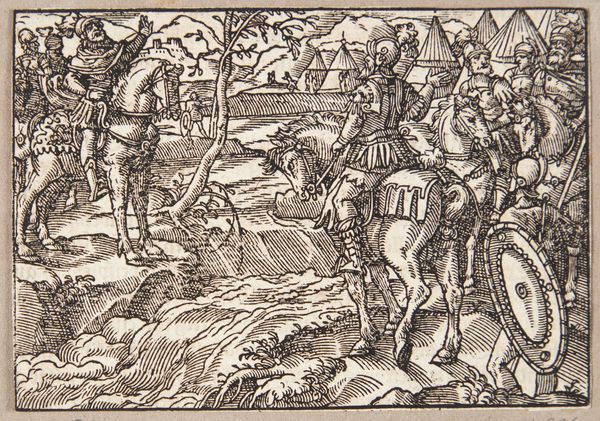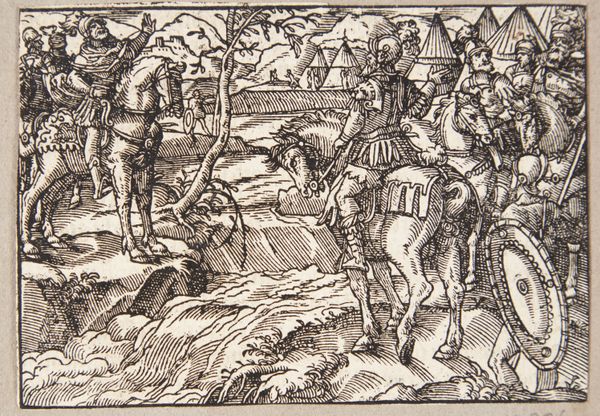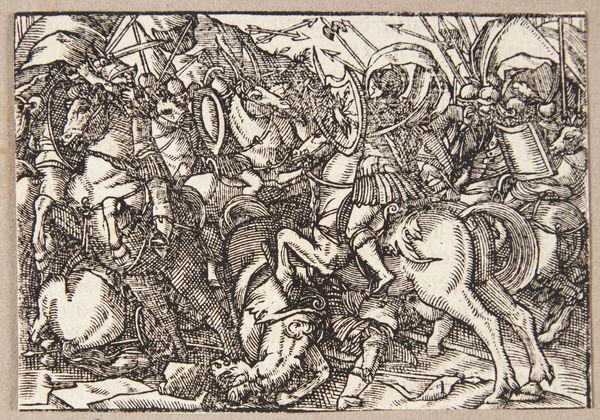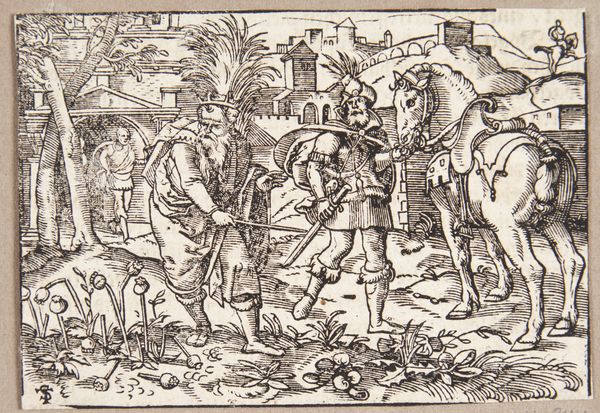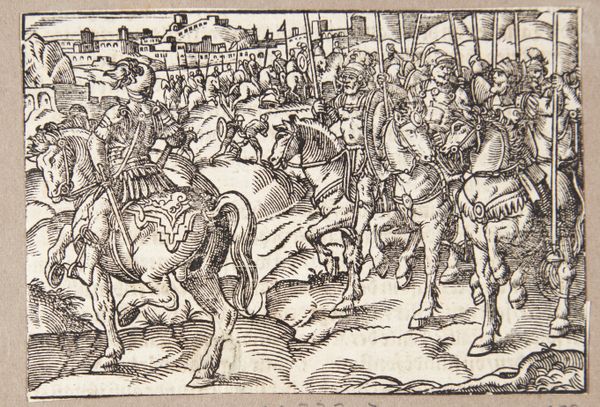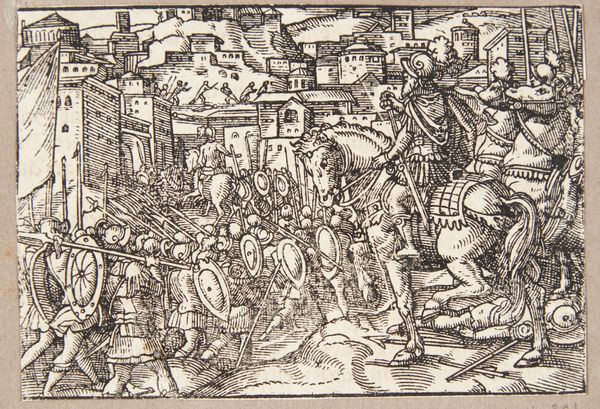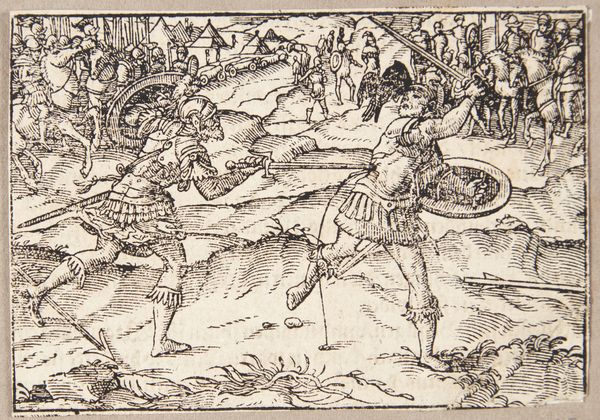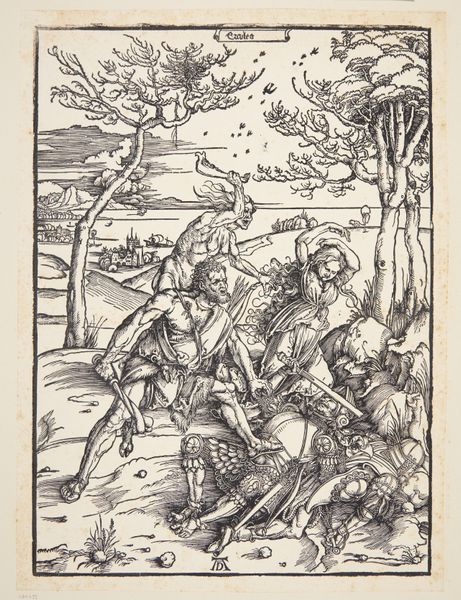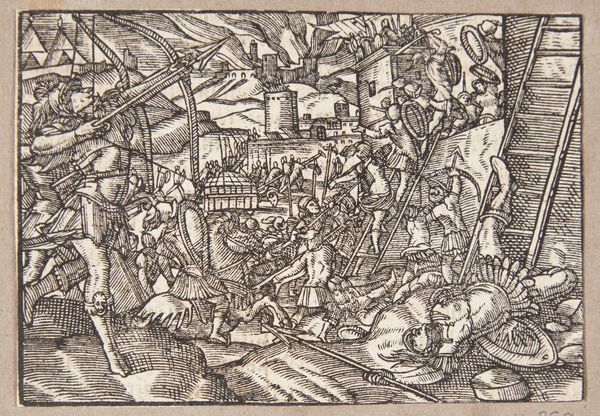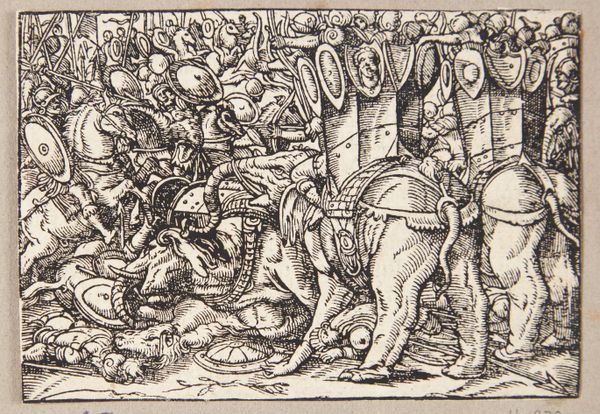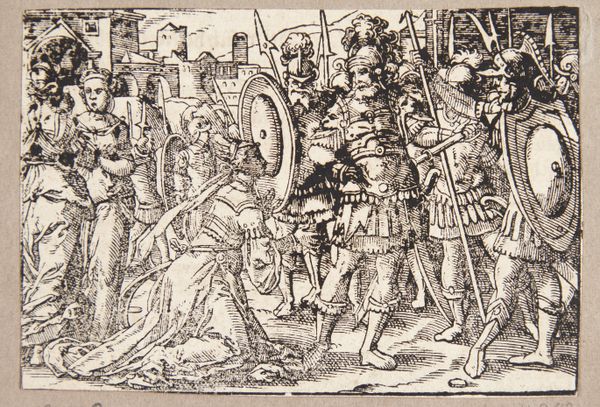
drawing, print, ink, woodcut, pen
#
drawing
#
ink drawing
#
pen drawing
# print
#
figuration
#
11_renaissance
#
ink
#
woodcut
#
pen work
#
pen
#
history-painting
Dimensions: 75 mm (height) x 105 mm (width) (bladmaal)
Curator: Tobias Stimmer created this work titled, *The Meeting between Hannibal and Scipio*, in 1574. It’s executed in ink, using pen and woodcut techniques. What stands out to you? Editor: Immediately, it’s the stark contrast, the dramatic hatching gives a sense of tension. It almost feels like we're witnessing a pivotal moment, but in a contained, almost claustrophobic space. Curator: This print represents a historical meeting, tinged with power dynamics. We see Hannibal and Scipio, two military giants facing each other. Stimmer produced it at a time when printmaking allowed for wider distribution of historical and allegorical narratives. These images often served political purposes, sometimes drawing parallels between the past and the present. Editor: Absolutely, and I think examining it from a contemporary perspective raises important questions. Who are these figures for us today? What narratives are being legitimized or sidelined by representing them in this way? This representation lacks a more nuanced perspective of how such encounters can reflect ongoing power imbalances. Curator: The choice of a woodcut certainly influences the visual impact. It has a particular kind of graphic appeal, despite the fineness of lines made using a pen, and I suspect this influenced wider viewing practices. Printmakers disseminated complex political and religious ideas, which were seen in the rise of broadsheets and illustrated books, marking this era of expanded knowledge and access to historical imagery. Editor: Indeed. Think too, how the visual language speaks to different social groups. Is this meant to ennoble conquest? Is it a warning? How did people from different positions experience and internalize its messages about power, leadership, and perhaps even resistance? And in our engagement with historical images like this, shouldn't we challenge the idea of the hero? Curator: That is something the work of history encourages, always a critical lens to understanding past ideas. Examining Stimmer’s work allows us to re-interrogate not only our engagement with classical history, but to also examine our responsibility when interacting with similar visual representations today. Editor: Exactly, because, ultimately, visual literacy helps us unpack the complex ways images shape, and perhaps even limit, our understanding of the world.
Comments
No comments
Be the first to comment and join the conversation on the ultimate creative platform.
